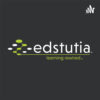 Digital learning is revolutionizing the corporate learning environment by making a vast amount of content available to learners.
Digital learning is revolutionizing the corporate learning environment by making a vast amount of content available to learners.
Some of this content can be accessed through internal learning management systems but the fastest growth is likely to come from content available outside the organization’s firewalls and systems. This is content directly available to anyone with internet access.
In a sense we have had digital learning since the first computer-based training (CBT) became available in the 1980s and even more so with the advent of e-learning (WBT) in the late 1990s. The current revolution dwarfs these past initiatives in terms of breadth, reach and sheer volume.
Most of our current measures, reports and dashboards were designed for traditional classroom learning and have been applied to e-learning as well but some have always asked if we need special measures for e-learning. The answer has basically been no. Traditional efficiency measures about number of participants, classes and hours combined with traditional effectiveness measures for participant reaction, test scores, application, impact and ROI can easily be applied to e-learning. The old post event survey was delivered at the end of class and with e-learning it is generally sent to participants immediately following the class. No revolution was required in measurement or reporting of those measures for e-learning.
The question we face now at the start of this new digital revolution is the same as the one at the inception of e-learning. Will new measures and reporting be required? My initial take is that the answer remains the same as well.
The standard efficiency, effectiveness and outcome measures still serve us well and the three standard reports recommended by Talent Development Reporting Principles (TDRp) still help us to better manage our programs and departments as well as demonstrate alignment to and impact on key company goals.
However, the measurement strategy itself may have to change dramatically because an increasing amount of content will be accessed outside the company and outside any learning management system (LMS). Think of employees taking free courses at the Khan Academy and universities like MIT, learning from You Tube or their Google search, or taking advantage of aggregators like Coursera, Udemy, Udacity and others. Because this learning takes place outside the LMS there is no way to automatically capture efficiency measures like number of participants, courses or hours and there is no way to automatically send a survey to gauge satisfaction, amount learned, application or other effectiveness measures – let alone any outcome measure.
Much more thought is going to have to be given to what measures are really important for this new digital learning. Do we really need to know how many courses employees take outside the LMS? Do we really need to know how satisfied they were with each course or how much they learned? I don’t think so.
Let’s go back to basics and determine what we want to know, why we want to know it and what we would do with the data if we had it. Learning and development is increasingly important to millennials so an employer certainly has an interest in finding out whether employees are satisfied with their learning but not necessarily with each micro-instance of learning, such as a Khan Academy course.
Why not send a quarterly or semi-annual learning survey to employees or expand your current employee engagement survey to ask about their satisfaction with learning in general? You could ask about how they have learned in the past three months (company offerings, MOOCs, free universities, Coursera-type providers, Khan, etc.) and perhaps how many times per week they access different sources. A summary question would be something like, “How satisfied are you with all the opportunities you have to learn?” This should provide the information to determine whether employees are sufficiently engaged with learning.
The digital revolution is not likely to require new measures or reports but is likely to require rethinking your measurement strategy with regard to data acquisition.
















